Nutrition services crucial on children’s survival as hunger crisis deepens in South Sudan.
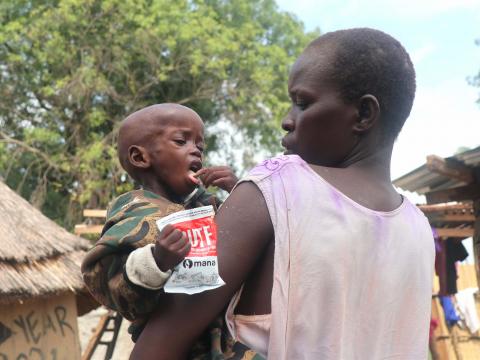
“I would have lost my child without the ready-to-use therapeutic food (RUTF)”, shares Abbo Elizabeth, a mother of six.
Elizabeth lives in Gumbo, a suburb on the outskirts of South Sudan’s capital Juba. Elizabeth’s husband Juma, is a soldier depending on a meager salary shared with his two families.
“It has been a year and my child still suffers from malnutrition due to the dire situation caused by poverty, the COVID-19 pandemic, and now the hunger crisis," she says.
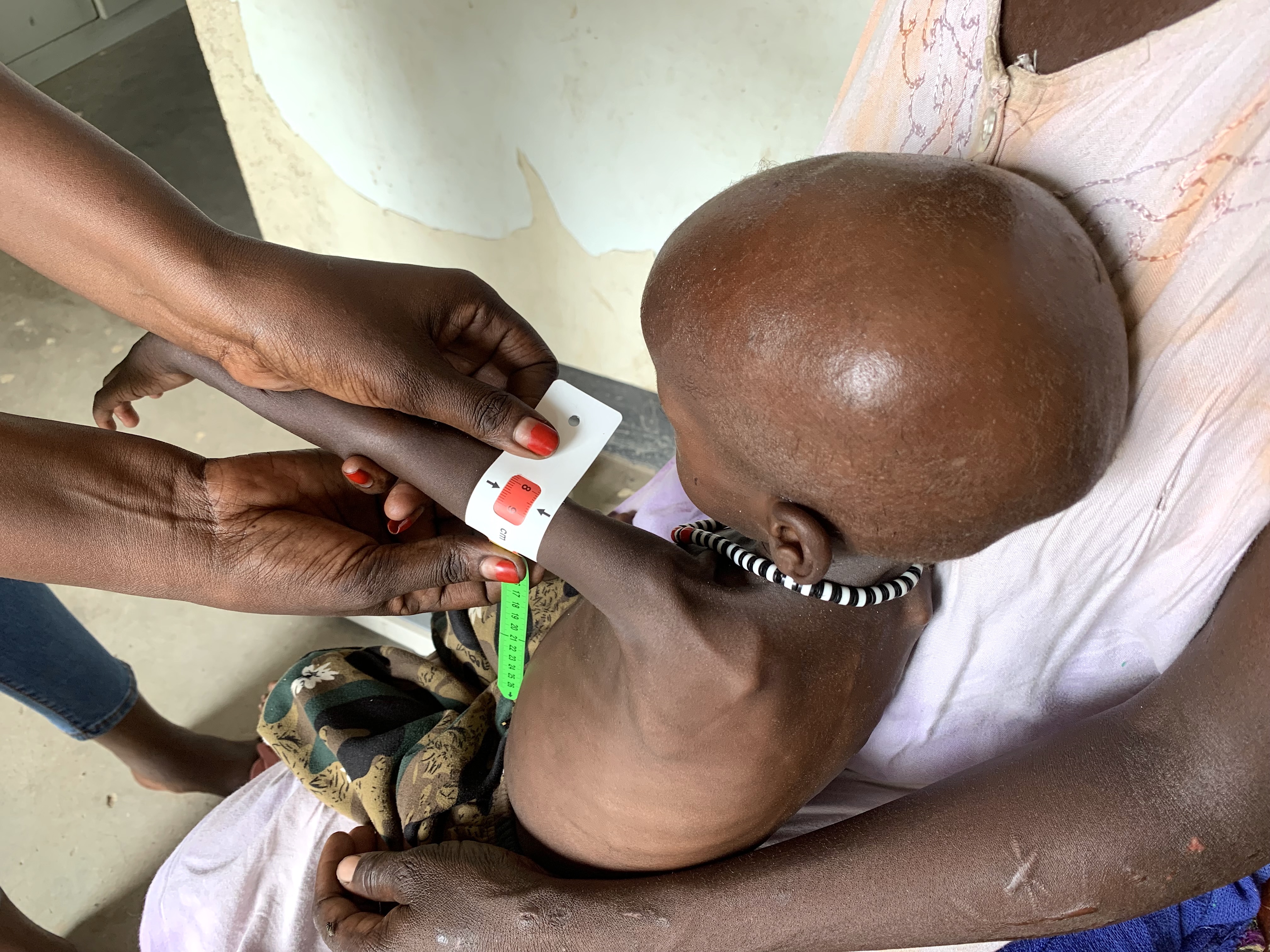
Elizabeth lost two of her children to anemia. She recalls, “My children succumbed to anemia last year. One was twin brother to Ocan who is now two years but can barely walk due to poor health.”
She adds further, “My child depends on plumpy nut and water. I have lost count of how many times he has relapsed from his condition. If we have sufficient food, things would be different.”
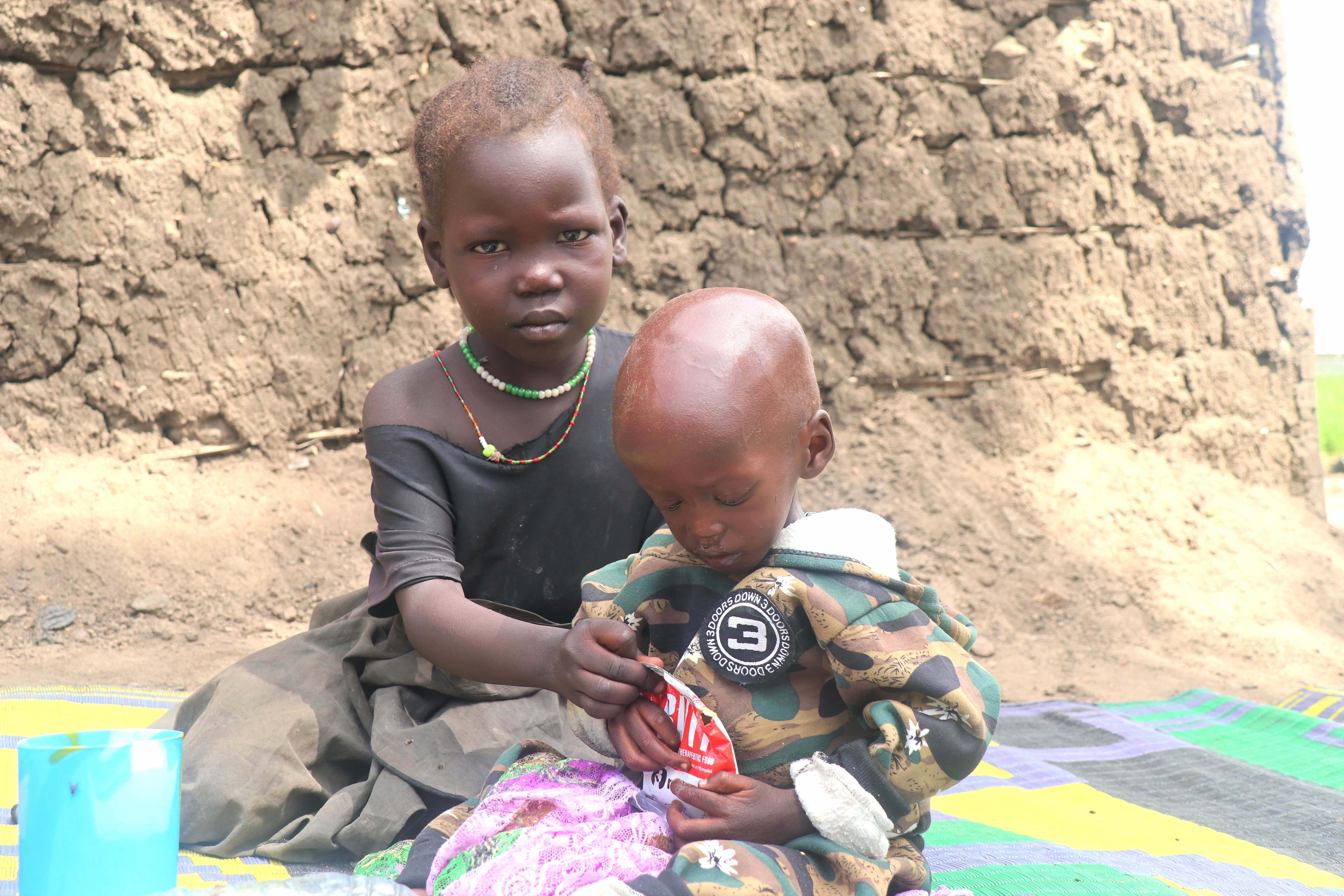
Ocan is among the 424 children treated with the RUTF, a gift-in-kind (GIK) program donated from World Vision Canada for the Juba Urban Project to help address the hunger crisis.
The World Food Programme (WFP) provides therapeutic products like ready-to-use supplementary food (RUSF) for treatment of children and corn-soy-blend (CSB++) for pregnant and lactating women.
As a mother, I can feel the pain that the children go through as they play together with an empty stomach.
Komakech Ronald Mandela, World Vision’s Nutrition Manager, says, “The donated RUTF complemented the existing supply from UNICEF. This has helped boost the recovery outcomes of the children enrolled in Out-Patient Therapeutic Program (OTP).”
World Vision has assisted an estimated 32,500 people, over 8,000 of them children. “As a mother, I can feel the pain that the children go through as they play together with an empty stomach,” Elizabeth sadly says.
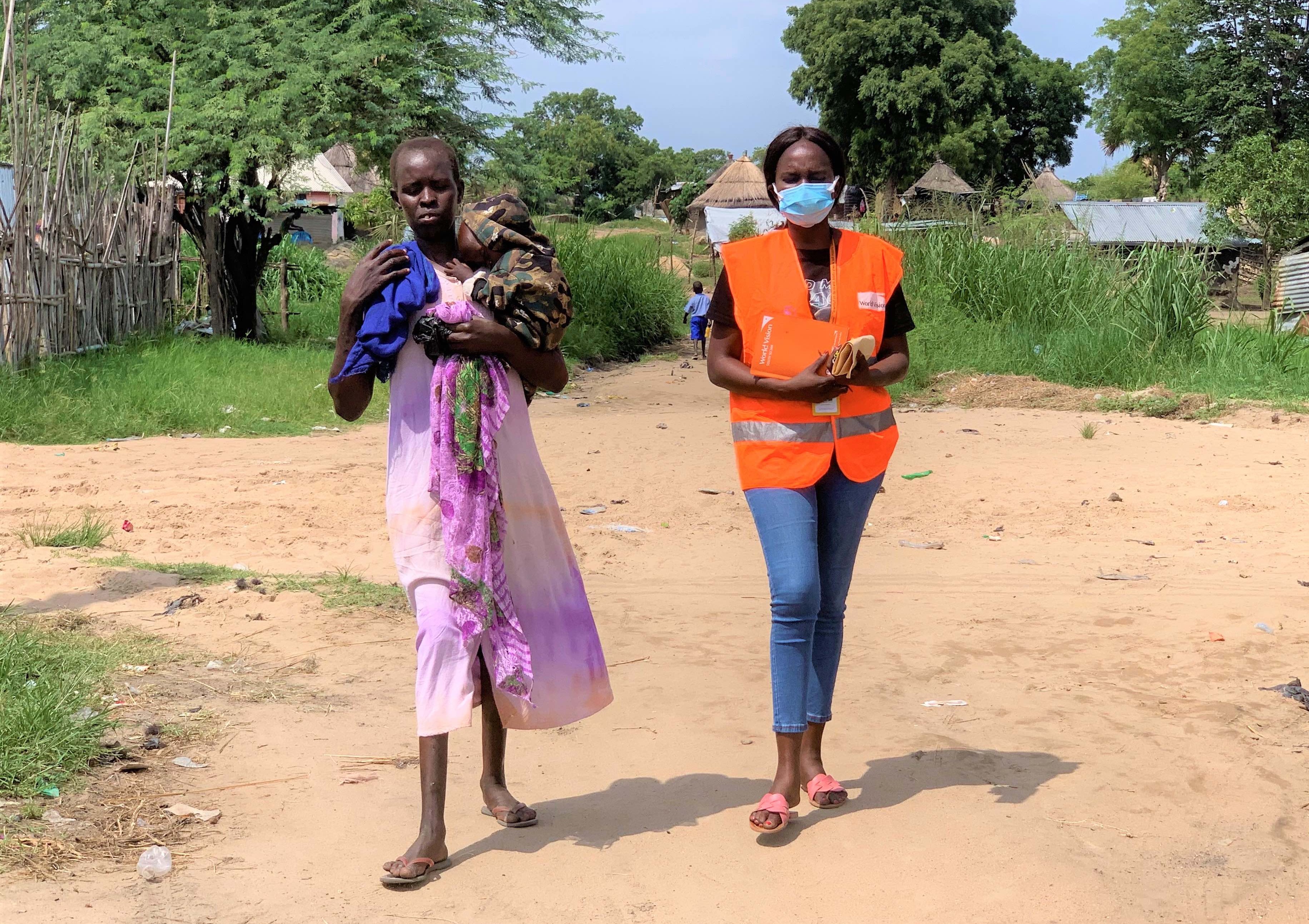
According to her, they can eat only once a day if her husband can bring home some money. Often, they sleep hungry. She adds, “Two weeks ago my son moved from severe to moderate acute malnutrition. The plumpy nut is doing great work in his body. He was able to play with his friends.”
Komakech further shares, “Having adequate stock in the nutrition centres improve the children’s response to treatment and recovery. It minimises defaulting from the program. From January to May 2021, 86% of the children discharged from OTP were cured, far above the 75% minimum SPHERE standards for cure rate.”
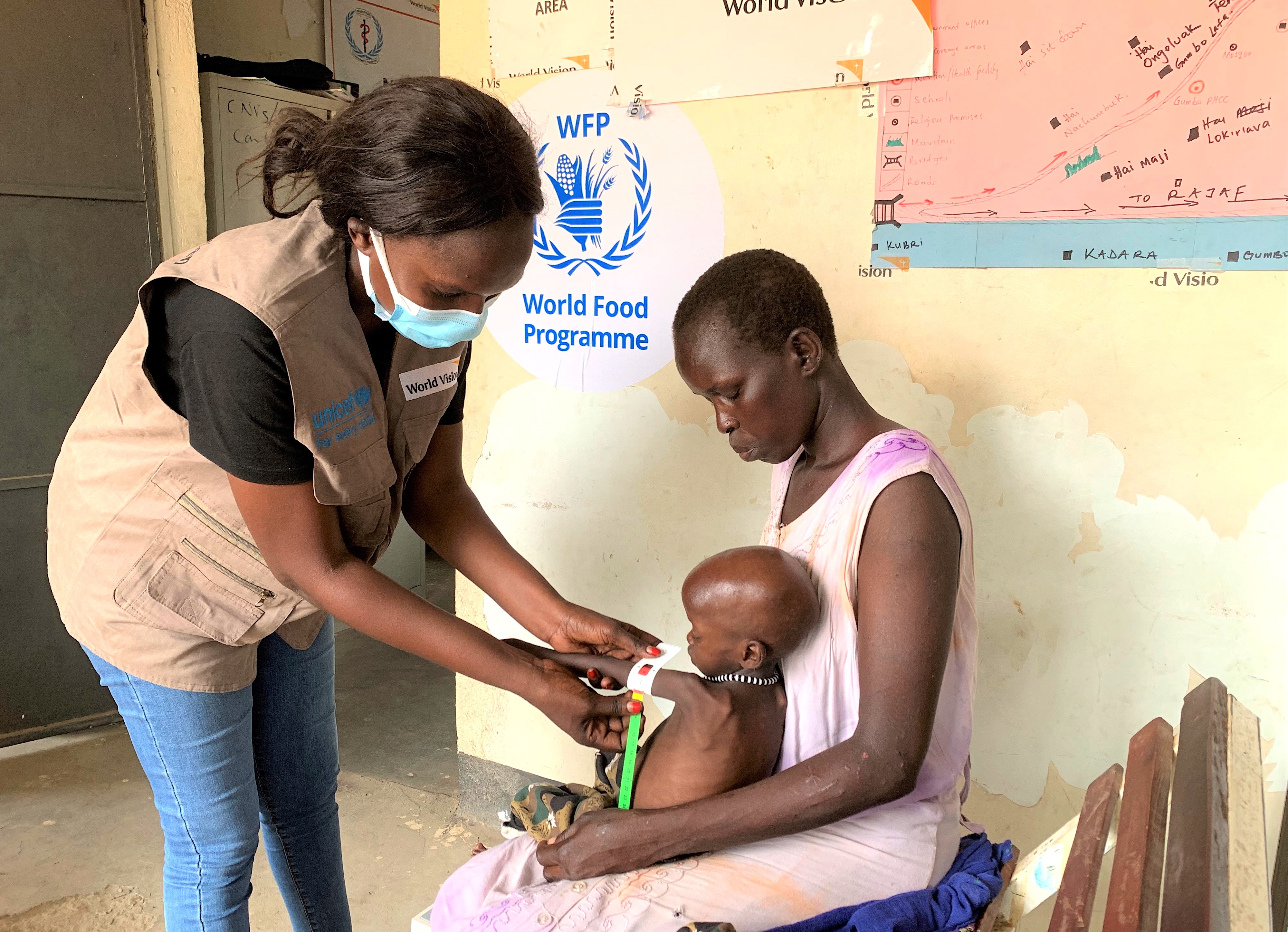
Nina Kon, 19 years old, a mother of one says, “I have tried everything but my son’s malnutrition persisted. I finally came to the nutrition centre so he can be treated. I am confident he will get well soon as I have heard mothers share positive results of the services.”
“To ensure quality nutrition services delivery to the most vulnerable communities, World Vision appeals to all stakeholders and donors to join us and support in the fight against malnutrition and the hunger crisis in South Sudan,” Mandela concludes.
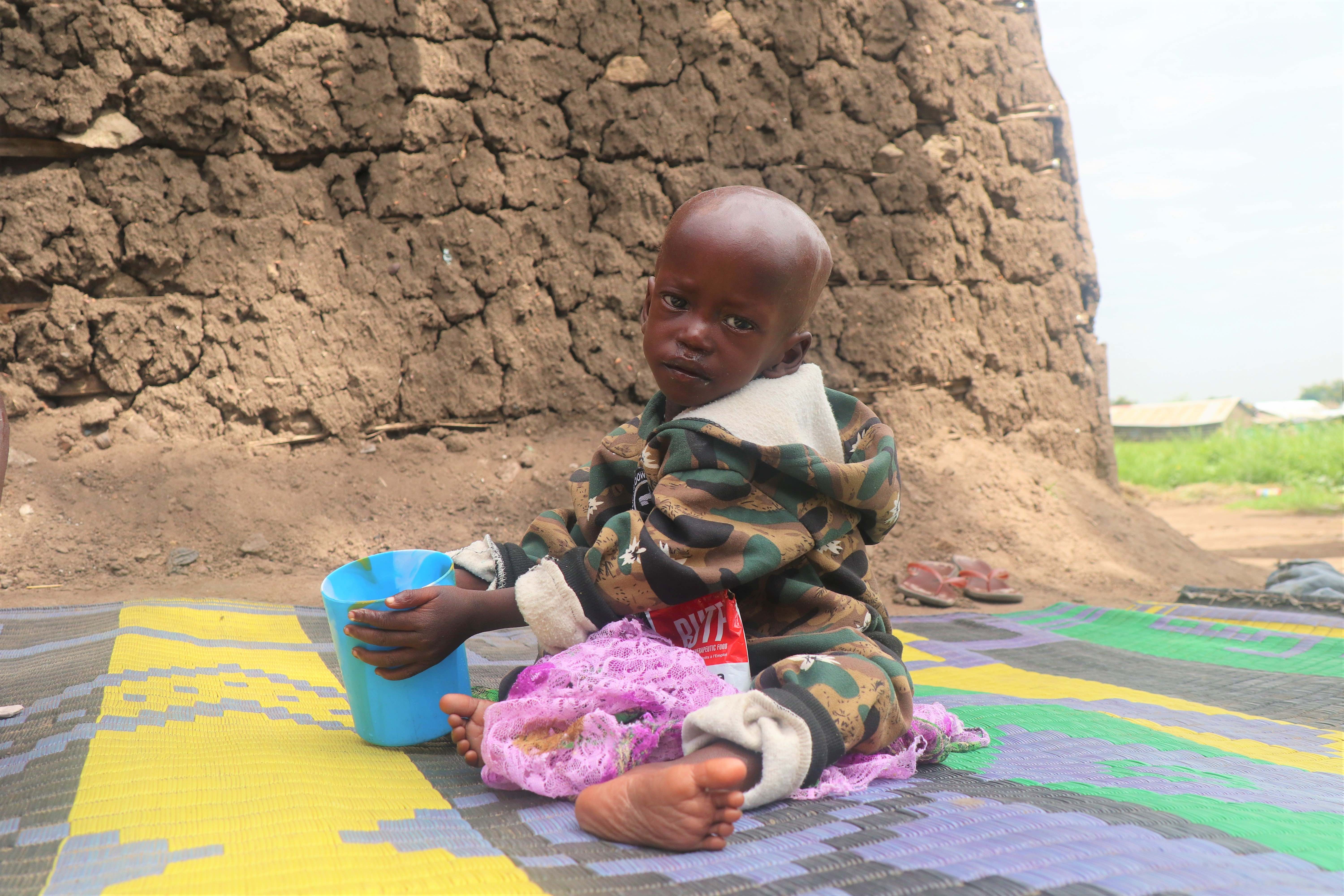
Story and photos by Scovia Faida Charles Duku, Communications Coordinator